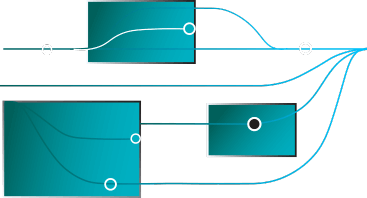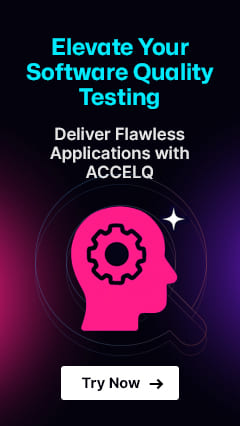10 Benefits of Codeless Test Automation

It can be hard for software developers to keep up with the short time between releases while ensuring the standard is high. Traditional ways of automating tests, which require a lot of coding and upkeep by hand, don't always align with requirements.
Codeless platforms make it possible for testers from all backgrounds to contribute to the automation process effectively by getting rid of the need for complicated scripting. This increases productivity and ensures better software. This blog talks about the benefits of codeless test automation. It enhances your testing process, improves software quality, and accelerates delivery cycles.
AI-Driven Test Creation and Maintenance
Test creation and management are made easier using AI-based codeless test automation solutions.
- Automatic Test Generation: AI algorithms automatically generate test cases by analyzing user interactions and application behavior. In other words, tests are developed using actual usage patterns to guarantee thorough coverage of essential features.
- Self-Maintaining Tests: Test scripts can be automatically updated by AI-driven tools in reaction to changes in the application. Because less user involvement is required, testing is guaranteed to be accurate and current even when the application changes.
Comprehensive CI/CD Integration
Continuous testing is made possible throughout the development lifecycle by codeless automation solutions and smooth integration with Continuous Integration and Continuous Deployment (CI/CD) pipelines.
- Continuous Testing: By allowing automated tests to run as a CI/CD process component, these solutions give code modifications instant feedback. Testing is kept up with development by this integration, which also lowers the possibility of production faults by identifying problems early.
- Better Teamwork: Codeless automation solutions promote greater teamwork between development, QA, and operations teams by connecting with CI/CD pipelines. Continuous input from automated tests encourages a shared responsibility for program quality.
Robust Object Recognition and Management
Codeless test automation platforms use advanced object recognition techniques to ensure reliable interaction with application elements.
- Dynamic Object Recognition: These platforms employ AI and machine learning to dynamically recognize and interact with UI elements, even when their properties change. This reduces test failures caused by UI updates and ensures consistent test execution.
- Object Management: Advanced object management features allow testers to centrally define and manage UI elements. The application’s UI changes are automatically propagated to all relevant tests, minimizing maintenance efforts.
Support for Complex Workflows and Scenarios
Codeless test automation platforms can handle complex workflows and scenarios without requiring coding skills.
- Visual Workflow Design: Users can create intricate test steps using visual interfaces that support drag-and-drop functionality. This allows for the design of complex workflows, including conditional logic and loops, without writing code.
- Scenario Management: Testers can easily manage and organize various test scenarios, ensuring comprehensive coverage of different user paths and application states. This capability helps in simulating real-world usage patterns and validating the application’s behavior under various conditions.
Do more with Test Automation
Discover more ways to add ‘low-code no-code‘ test automation in your workflows

Parallel and Distributed Test Execution
Codeless test automation tools support parallel and distributed test execution, significantly improving testing efficiency.
- Parallel Execution: The tests can be executed simultaneously across multiple environments, reducing the overall test execution time. This capability particularly benefits large test suites, enabling faster feedback and quicker iterations.
- Distributed Testing: These platforms allow for distributed testing across different machines and networks. This setup ensures that tests can be run in varied environments, providing comprehensive coverage and ensuring the application’s performance in diverse conditions.
Data-Driven Testing and Parameterization
Test coverage and flexibility are increased by codeless automation solution's ability to provide data-driven testing and parameterization.
- External Data Sources: Testers can drive test scenarios with external data sources such as spreadsheets, databases, and CSV files. This validates the program against different input data sets, therefore enabling comprehensive test coverage.
- Parameterization: Tests allow various situations and edge cases to be covered by running tests with various data values. Possible flaws that static data might miss are helped to be found by this method.
Visual Automated Testing
Automated visual testing capabilities provided by codeless test automation platforms guarantee that the user interface (UI) is consistent across devices and releases.
- Layout Validation: Visual layout testing confirms that user interface elements are positioned and shown correctly on various browsers and devices. Together with preserving the application’s visual integrity, this validation guarantees a constant user experience.
- Visual Regression Testing: Automated visual testing can spot changes made in new builds, therefore avoiding visual regressions. This feature guarantees that new code does not degrade the current user interface, thereby upholding a high standard.
Comprehensive Reporting and Analytics
Codeless test automation tools provide detailed reporting and analytics, offering insights into test execution and results.
- Failure Analysis: Advanced analytics features allow for in-depth failure analysis, helping teams understand the root causes of test failures. This capability supports faster debugging and resolution of issues.
- Trend Reports: Historical data and trend reports provide insights into test performance over time, helping teams identify patterns and improve their testing strategies. This ongoing analysis ensures continuous improvement in the testing process.
API and Web Services Testing
Codeless automation tools can do more than just UI testing; they can also test APIs and web services.
- Scriptless API Testing: Without writing code, testers can describe API requests, check responses, and make test scenarios that go from beginning to end. Using this makes testing web services easier and ensures they work correctly and fit in perfectly with front-end parts.
- Comprehensive Validation: These tools can do many kinds of validations, such as checks for data integrity, status codes, and reaction times. This makes sure that APIs meet standards for speed and dependability.
Enhanced Security and Compliance Testing
Frameworks for security testing can be combined with codeless automation tools to find holes and ensure compliance automatically.
- Compliance Testing: Codeless tools can help ensure that apps follow the rules and standards in the industry, like GDPR, HIPAA, and PCI-DSS. Security steps can be checked to ensure they are in place and working correctly with automated tests.
- Continuous Security Validation: These tools make sure that security checks are done regularly and automatically by integrating with CI/CD processes. This allows for continuous security testing. This method helps find and fix security problems early in development.
Conclusion
Codeless test automation makes software testing much more efficient and effective by cutting down on manual work, increasing test coverage, and ensuring that tests work well with CI/CD processes. Its advanced features, like AI-driven features, parallel processing, and full reporting, make the whole testing process easier.
Teams can focus on making high-quality apps faster and more consistently when they use codeless automation. Are you ready to change the way you test? Get your ACCELQ demo and find out how it is a powerful codeless automation platform.
Geosley Andrades
Director, Product Evangelist at ACCELQ
Geosley is a Test Automation Evangelist and Community builder at ACCELQ. Being passionate about continuous learning, Geosley helps ACCELQ with innovative solutions to transform test automation to be simpler, more reliable, and sustainable for the real world.
Discover More
 OCR Test Automation: Enhancing Accuracy and Efficiency
OCR Test Automation: Enhancing Accuracy and Efficiency
OCR Test Automation: Enhancing Accuracy and Efficiency
 What is Selenium? What are the challenges in Selenium Automation?
What is Selenium? What are the challenges in Selenium Automation?
































